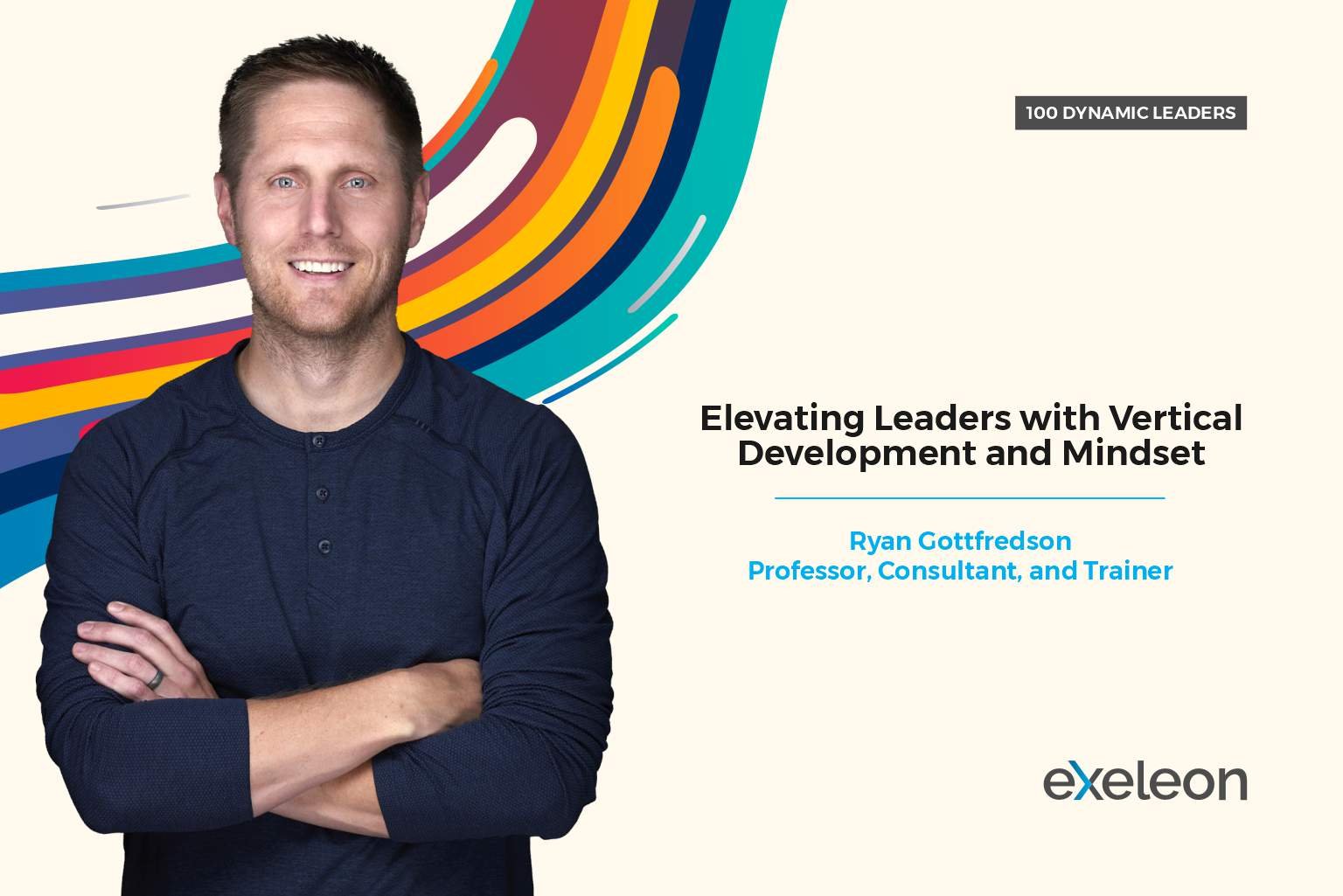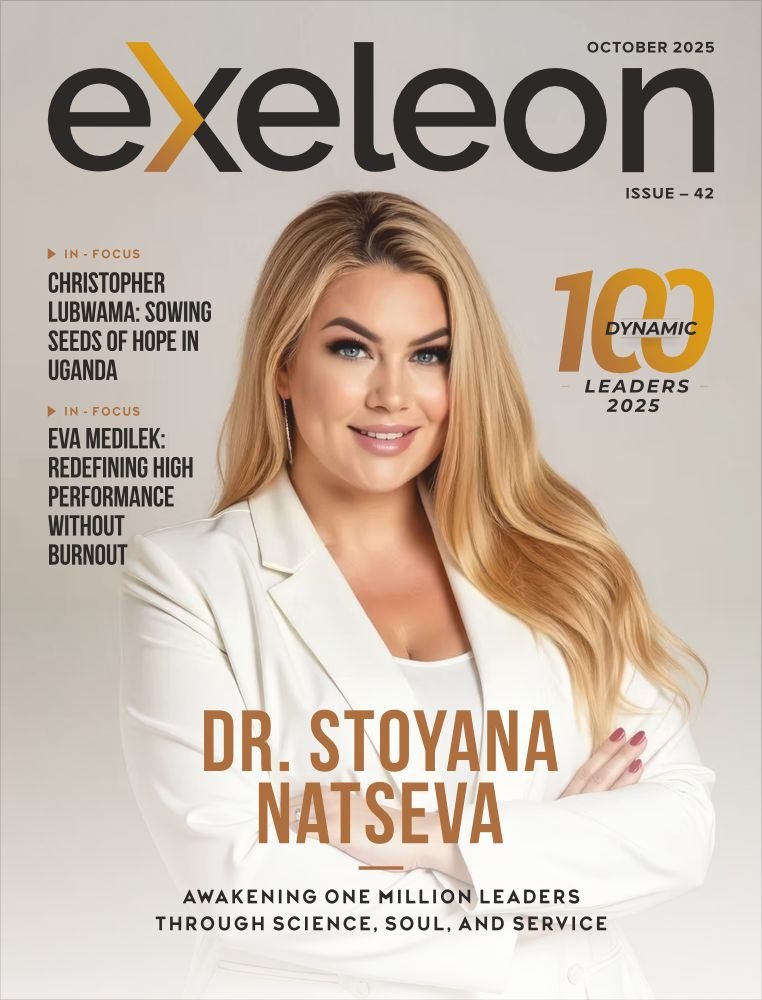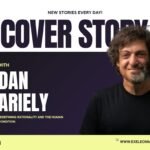
This feature is part of our 100 Most Dynamic Leaders of 2023. Check out the entire issue and listing by clicking on this link.
Organizations worldwide are spending over $357 billion on leadership training and development, with $165 billion being spent in North America itself.
However, studies also revealed that 3/4th of the global organizations rated their leadership programs to be ineffective. In contrast to the huge investments being made, these programs are unable to create the desired results for organizations across the world.
According to the research and studies by Ryan Gottfredson, this can be attributed to the lack of focus being placed on a specific attribute – one that is foundational to how leaders think, learn, and behave – their mindsets.
As a mindset expert and cutting-edge leadership consultant, Ryan has helped develop thousands of leaders and empowered organizations to operate at a higher level. In his experience, some leaders possess an internal operative system wired for self-protection. He explains that the wiring of their internal operating system to be categorized as having at least one of the following mindsets:
Fixed mindset – They seek to avoid failure and look good. They are prone to do what has worked in the past and have a hard time embracing what is going to work in the future.
Closed mindset – They seek to always be right and in control. They are prone to be a command-and-control leader, dictating the direction to those they lead and often micromanaging.
Prevention mindset – They seek to avoid problems. They are prone to focus on avoiding or putting urgent fires in the short-term and are thus disconnected from long-term strategic objectives or purpose.
Inward mindset – They seek to get ahead. They are prone to do what is best for them and are not sensitive to how their decisions and actions may be having a detrimental effect on those around them.
According to Ryan, “When leaders operate with one or more of these mindsets, they are being limited in their dynamism.”
Contrary to this, the best leaders possess an internal operating system that is wired for value creation. These can be categorized as having the following mindsets:
Growth mindset – They seek to learn and grow. They are willing to try new things, make mistakes, and even fail, because they know that when they do, they develop into a better version of themselves.
Open mindset – They seek to find truth and think optimally. They inherently believe that their perspectives are limited. Thus, they are willing to explore if they are wrong, ask questions, and seek feedback and new perspectives. They do these things because they know that when they do them, they engage in higher-quality thinking and decision making.
Promotion mindset – They seek to reach goals. They know that to get from where they are (Point A) to where they want to go (Point B), they are going to have to wade through territory they have never traversed. In doing so, they expect problems to arise. They don’t love problems, but they know they are part of the journey of getting to their intended destination.
Outward mindset – They seek to lift others. They see those they lead and serve as been equal to or better than themselves. This allows them to see others as people of value, which allows them to be sensitive to how their decision making and behaviors influence others.
When leaders operate with these value creation mindsets, they are able to be dynamic leaders that can effectively navigate both current and future demands.
As a dynamic leader himself, Ryan has been able to leverage his experiences and integrate these mindsets. He explains, “When I have realized that I have some limiting self-protective wiring, I have been able to engage in developmental efforts to operate at a higher level and become a more dynamic leader.”
Becoming an Effective Leader
For Ryan, leadership has always been a subject of interest and curiosity.
During high school, he took a class in sports psychology and immediately fell in love with the subject. Through this class, he was able to read books like The Seven Habits of Highly Effective People by Steven R. Covey. Moreover, he read leadership books written by established basketball coaches – Mike Krsyzewski, Pat Riley, and Rick Majarus.
He recalls, “After taking that class, I remember thinking, “If I could write books like these for my career, I would have my dream job.” So, from there, I set out to study leadership and leadership development.”
Enrolling at Indiana University for a Doctorate degree in Organizational Behavior and Human Resources, enabled him to study historical and cutting-edge science on leadership development. From this experience, Ryan learned that the majority of leadership research has primarily focused on asking and answering one question: “What do leaders need to do to be effective?”
However, Ryan felt there was a visible gap that wasn’t being addressed “While this is a good question and it has led to interesting answers, I feel the question is short-sighted.”
According to him, leadership is not limited to doing certain things. Instead, leadership is about being a certain type of person, someone that others want to follow.
With this perspective in mind, Ryan set out to study how to help individuals become truly effective leaders, one that people want to actually follow. His relentless research on this subject enabled him to discover the role of mindsets.
“Through my study on mindsets, I have come to learn that mindsets are the most foundational aspect for how leaders operate. Mindsets are our mental lenses that shape how we see, interpret, and interact with our world,” he claims.
Today, armed with this transformative information, Ryan is on a mission to help leaders awaken and improve their mindsets so that they can elevate their being.
Vertical Development
As a leadership coach, Ryan is helping organizations vertically develop their leaders by focusing on mindsets.
Contrary to the traditional development approach (Horizontal development), vertical development focuses on improving one’s internal operating system. It’s an uncommon form of leadership development that largely focuses on helping leaders awaken and elevate their mindsets in order to become better.
Ryan explains the difference between these two development programs with an interesting analogy: “Horizontal development is like adding an app onto an iPad, the new app broadens the iPad’s functionality. This is helpful, but it doesn’t improve how effectively the iPad operates. It can’t do any more complex things.”
He continues, “Vertical development is like upgrading the iPad’s internal operating system. This is transformational. It allows the iPad to operate at a higher level and do more complex things.”
Ryan goes on to advise organizational leaders to focus on mindsets directly. He also suggests using his Personal Mindset Assessment tool to better understand this process.
Moreover, he also advises leaders to create a psychologically safe environment. “If employees have a fixed mindset, that means that they are feeling and being self-protective. Leaders need to sense this and make adjustments to help employees feel safe to speak up, take risks, make mistakes, and even fail at times.”
Staying in Balance
One of the key insights Ryan has learned about vertical development and mindsets is that it requires consistent small daily interventions to help (1) ensure we stay in value creation mode, and (2) exercise our positive mindset neural connections.
To integrate this insight into his own life, Ryan engages in some routine activities that help him mentally stay at a high-level zone of operation. This activities include meditating, reading inspirational quotes, engaging with a gratitude and affirmation journal, exercising, reconnecting with his purpose, and reading or exposing himself to alternative and high-level perspectives.
When he is able to do these activities, Ryan feels “in balance” with himself, one within and one beyond.
Going forward, Ryan is excited to help people learn more about vertical development and mindsets. He envisions vertical development efforts and mindset conversations to become a key part of leaders’ and employees’ everyday experiences.
“I believe that if we can do this, we can elevate and heal the world. We are making progress, but there is still a lot of work to do,” he concludes.
Professor | Consultant | Trainer









